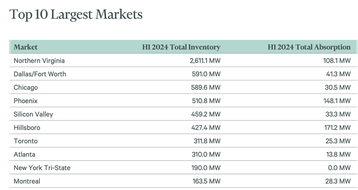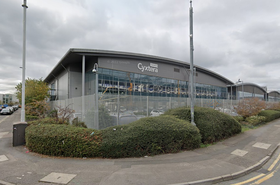North American data center vacancy has reached a record low, despite supply growing by a double-digit percentage in Q1 2024, according to a report from CBRE.
The report said increasing demand from cloud computing and artificial intelligence (AI) has more than offset new supply, pushing vacancy rates down.
Around 515MW of new supply was added in the eight primary North American markets in the first half of this year, equivalent to adding the entirety of Silicon Valley’s existing inventory.
However, primary market vacancy rates fell to a record low of 2.8 percent, down from 3.3 percent in the first half of 2023.
Another report from CBRE earlier this year said emerging markets are the key to meeting demand, with vacancy in Northern Virginia dropping to 0.1 percent.
Data center construction continues to soar with 3,871.8MW under construction at the moment. This is an increase of 69.2 percent from a year ago.
Almost 80 percent of this incoming capacity has already been pre-leased. The report adds that a shortage of available power and longer lead times for new electrical infrastructure continues to delay completion.
“The trend has been consistent over the past two years: Demand for data center capacity far exceeds supply, which continues to drive up pricing in a material way,” said Pat Lynch, executive managing director and global head of CBRE.
“Based on the preleasing numbers in this report and forecasts for demand, we expect to see this imbalance continue for several more quarters.”
Rent still on the rise
Rent prices have also risen by 6.5 percent compared to the first half of 2023. The national average now stands at $174.06 per kW/month.
Atlanta has seen the largest pricing increase across primary markets, growing 26 percent year over year. The city is a major data center hub with operators including Microsoft, CoreSite, DataBank, QTS, DC Blox, Vantage, and EdgeConneX.
The report adds that demand for HPC has exacerbated the pricing disparity between legacy facilities and new data centers, as older data centers do not have the infrastructure to handle high-power demands.
This trend will open the door for tertiary markets in Northern Indiana, Idaho, Arkansas, and Kansas, said the report.
Gordon Dolven, director of Americas data center research at CBRE, said: “As we look to 2025, several trends are influencing the data center industry, including emerging markets for development due to tax incentives, advancements in renewable energy, power availability, and a need for accelerated construction completion timelines.”
He added: “Meanwhile, artificial intelligence is shifting how operators select sites. We are seeing more flexibility from developers for sites outside of traditional central business districts if AI training models do not require low latency requirements 24/7.”







